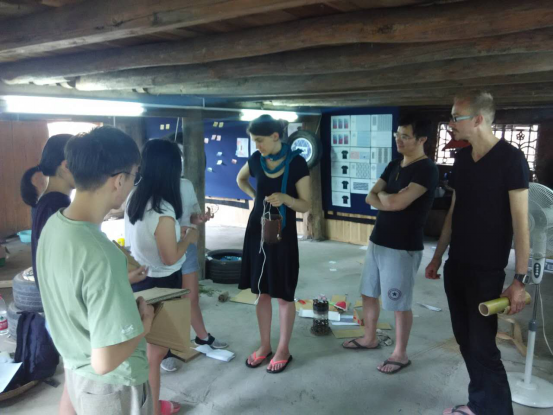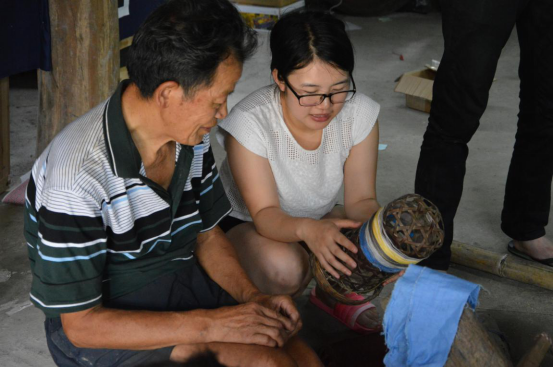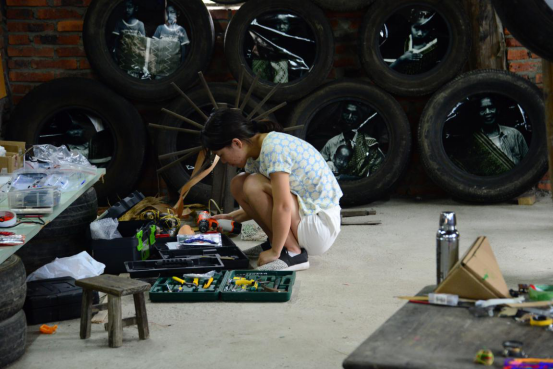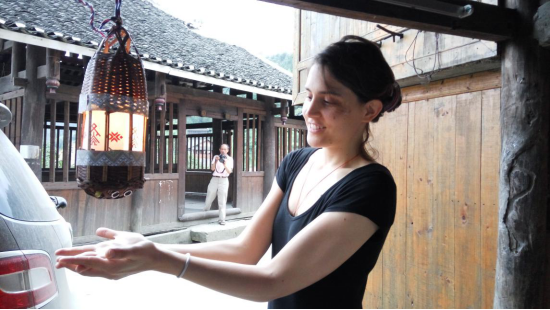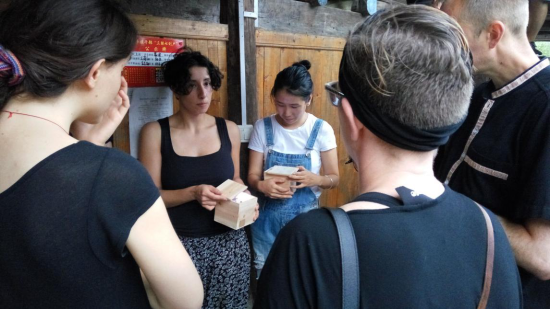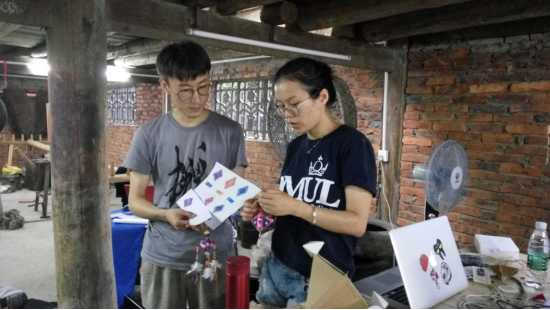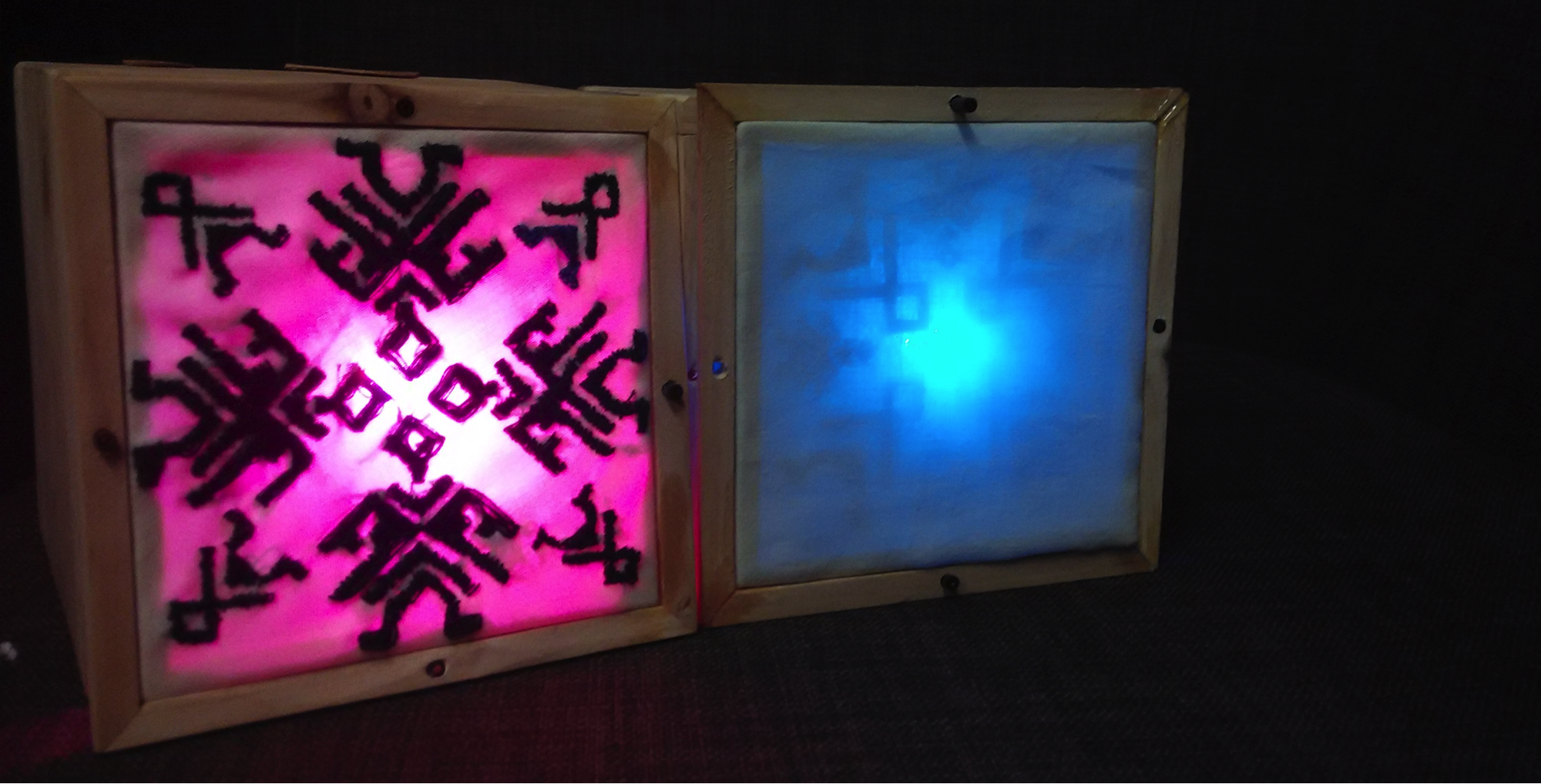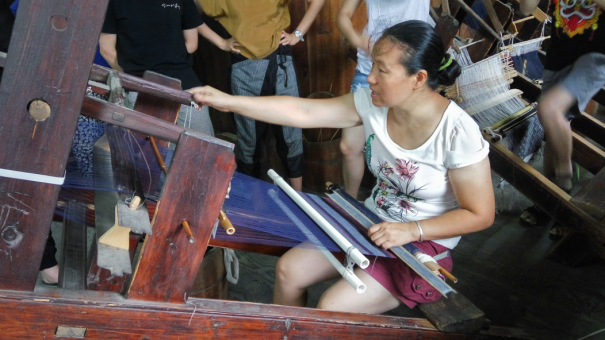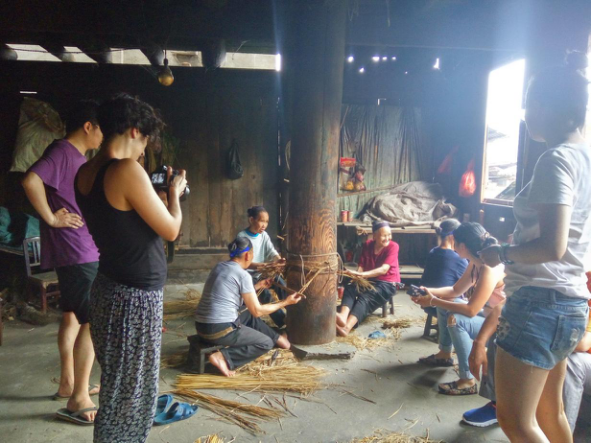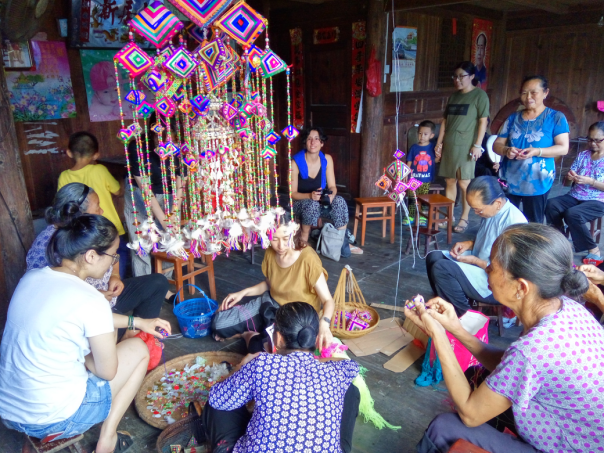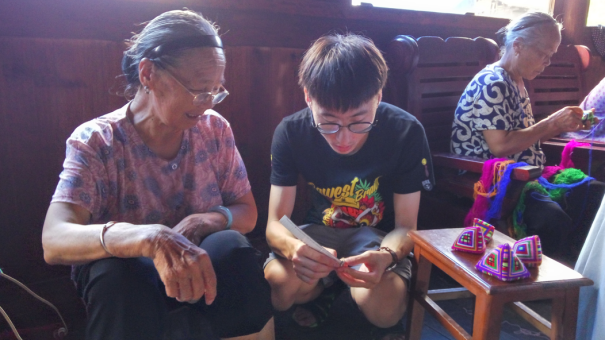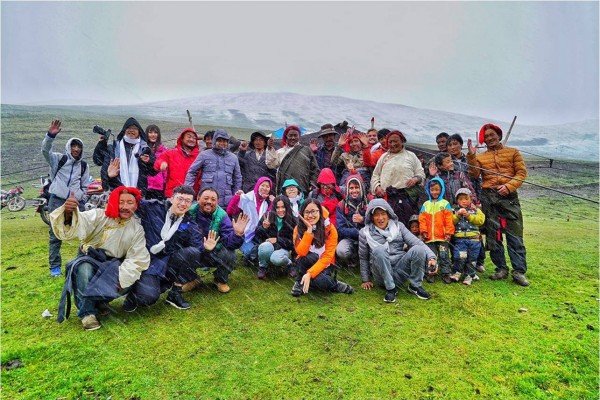2016年7月18日,工作坊持续进行, 9点大家开始音乐盒的设计与制作。上午湖南省工业设计协会的杨苗女士来通道基地慰问,与王巍老师、Nick教授进行交流了工作坊进程。中午大家分别展示大家的设计雏形,同时Nick与王巍分别对大家的设计进行了点评。
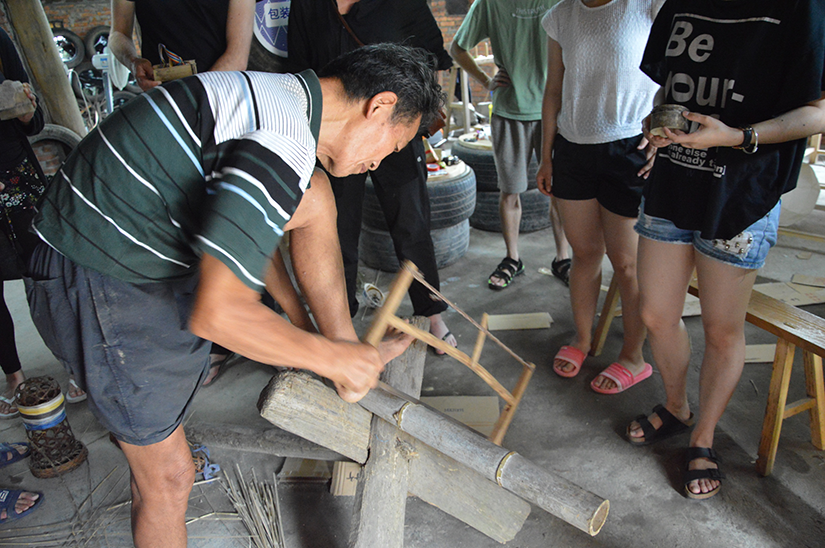
午饭后,老师请来当地的竹编师傅为大家进行主编工艺的制作演示,同时,Nick教授还请竹编师傅重新裁切了交互装置外形,Nick教授并请主编师傅在竹筒做的交互外形上签了名字。同时,在当地村民的热情帮助下,为同学们裁切木块与竹筒,同学们的设计才得以顺利进行。
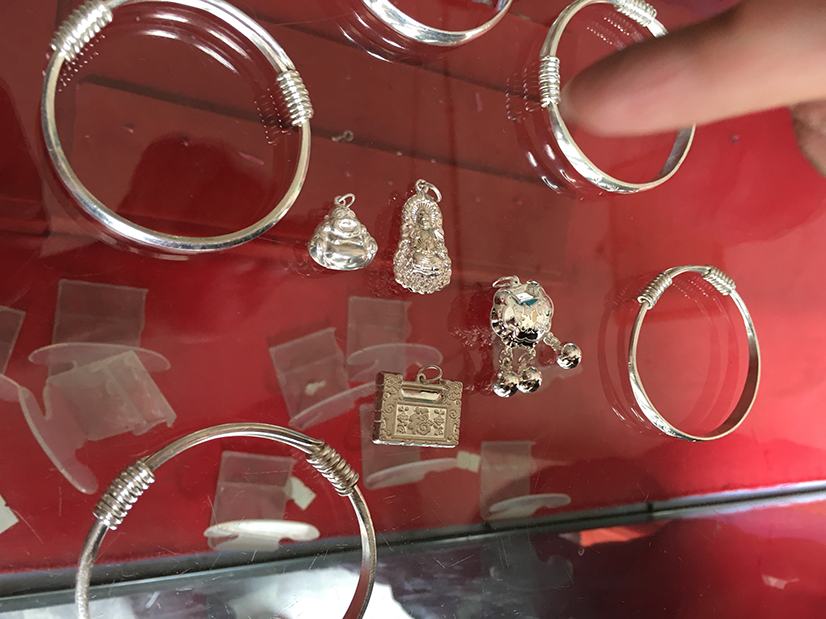
在下午3点,王巍老师带着Nick教授与部分同学,再次拜访请教当地的银饰制作师傅和当地制作香包的手工艺老人,部分同学带着自己设计的音乐盒雏形以及设计中所遇到的工艺制作问题请教当地村民。与此同时,在下午有来自长沙油画进修班外出写生的同学和广西、湖南等地的游客来基地参观同学的设计,并与同学们进行了热情的交流。
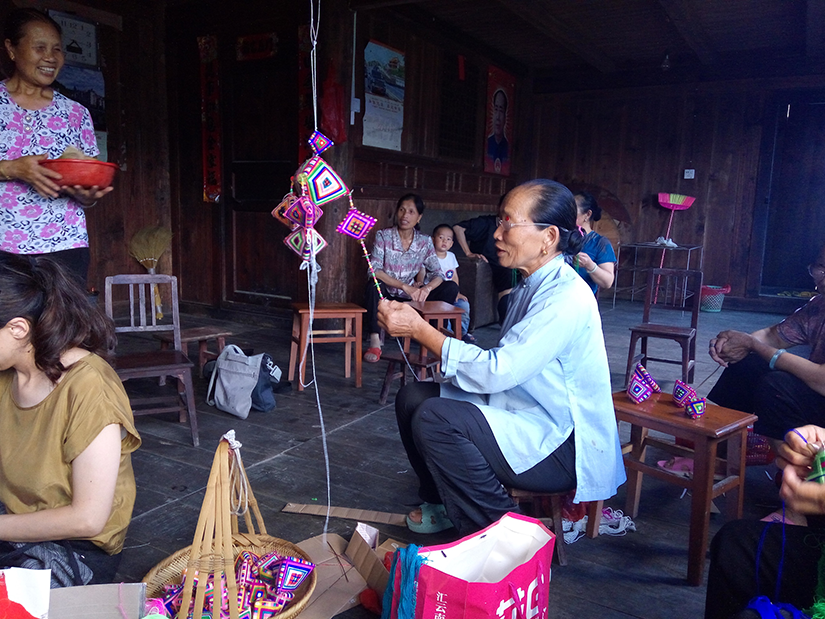
晚上同学们继续与老师们加紧设计,为19日的汇报努力准备。
On 18th July 2016, the fourth day of workshop, students continued to work on their design idea and build the demo of musical box. Miss Miao Yang from Industrial Design Society of Hunan Province visited the Hengling base and discussed with Prof. Nick, Prof Jennifer, and Dr. Wei about the design.
Before lunch, each team presented the progress of design, based on which Nick and Wei gave suggestions on the design and making.
After lunch, Wei invited the local Mr. Long, who is a bamboo craftsman from local, to share the process of making and weaving the bamboo with students. Mr. Long kindly helped students to make their design and give suggestions on further steps. Prof. Nick also asked Mr. Long to help to make the form of his design with bamboo material. In the end, he invited Mr. Long to give his signature on the bamboo.
Afterwards, Nick and Wei, together with part of the students, visited the silver craftsman and sachet craftsman in Pingri village. Student who designed the demo related to the sachet presented the music demo to local craftsman and discussed with them.
After dinner, students continued working hard to prepare the presentation next day.
